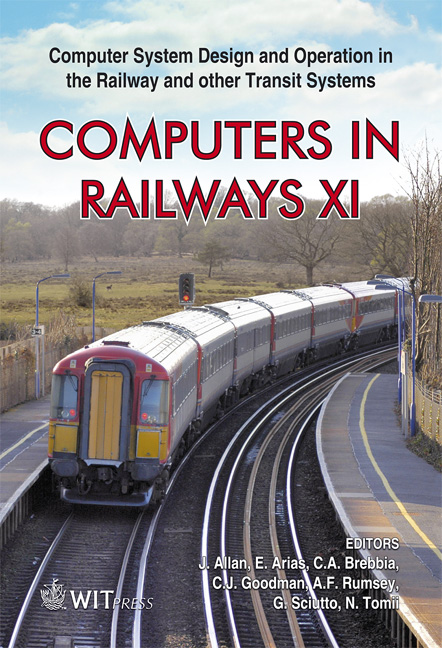Towards Interoperability On Northwest European Railway Corridors: Signalling On The High-speed Railway Amsterdam–Antwerp
Price
Free (open access)
Transaction
Volume
103
Pages
10
Page Range
243 - 252
Published
2008
Size
466 kb
Paper DOI
10.2495/CR080251
Copyright
WIT Press
Author(s)
J. H. Baggen, J. M. Vleugel & J. A. A. M. Stoop
Abstract
The high-speed railway Amsterdam (The Netherlands)–Antwerp (Belgium) is nearly completed. As part of a TEN-T priority project it will connect to major metropolitan areas in Northwest Europe. In many (European) countries, high-speed railways have been built. So, at first sight, the development of this particular high-speed railway should be relatively straightforward. But the situation seems to be more complicated. To run international services full interoperability is required. However, there turned out to be compatibility problems that are mainly caused by the way decision making has taken place, in particular with respect to the choice and implementation of ERTMS, the new European railway signalling system. In this paper major technical and institutional choices, as well as the choice of system borders that have all been made by decision makers involved in the development of the high-speed railway Amsterdam–Antwerp, will be analyzed. This will make it possible to draw some lessons that might be used for future railway projects in Europe and other parts of the world. Keywords: high-speed railway, interoperability, signalling, metropolitan areas. 1 Introduction Two major new railway projects were initiated in the past decade in The Netherlands, the Betuweroute dedicated freight railway between Rotterdam seaport and the Dutch-German border and the high-speed railway between Amsterdam Airport Schiphol and the Dutch-Belgian border to Antwerp (Belgium). Both projects were severely delayed. The Betuweroute railway was opened in the summer of 2007. Since then, only a very limited number of trains
Keywords
high-speed railway, interoperability, signalling, metropolitan areas.





